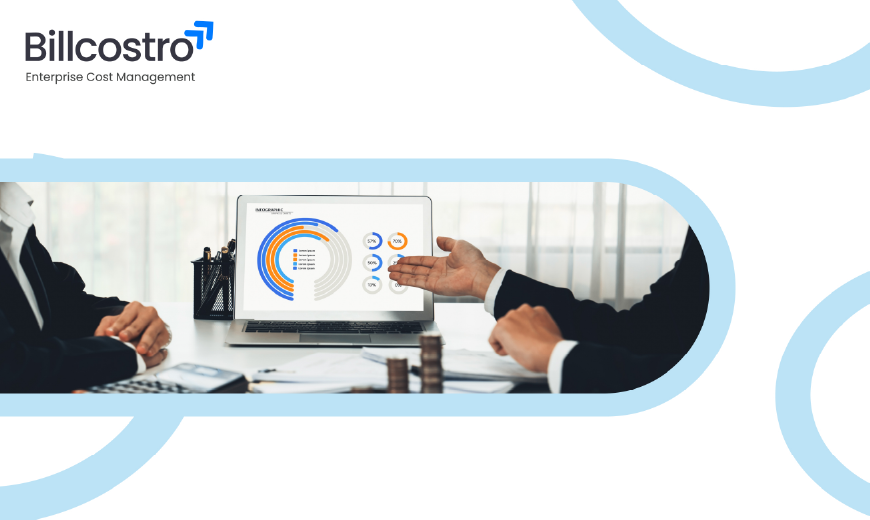
June 30, 2025, 7:18 a.m.

Profitability in a rapidly changing business environment nowadays is not just about increasing sales but also about managing expenses in a smarter and more flexible way.
Conventional accounting techniques are still necessary but they cannot always provide the up-to-the-minute information and the strategic understanding that is needed to compete successfully. Only if accounting is complemented by a more intelligent approach to enterprise cost control, businesses can really gain an advantage.
Accounting mainly deals with historical information—recording transactions, ensuring regulations are followed, and creating financial statements. Although very important, this limited perspective can only reveal the inefficiencies and leakage occurring in real time in departments, vendors, and operational processes if it is combined with other sources of information.
Cost control, conversely, is a discipline looking ahead. It poses the following questions:
In what ways can we simplify the workflow and stop leakage from happening?
That is the point where enterprise financial management systems have a role — so do tools such as Billcostro, which give finance leaders the control levers they need to empower business growth.
Enterprise cost control is not about micromanaging budgets or making random cuts to expenses. It is still about visibility, accountability, and strategic decision-making. The contemporary finance team has to act as a business enabler — finding a balance between growth objectives and financial discipline.
Key Pillars of Smart Cost Control:
Centralized Visibility Track and manage all financial transactions — vendor payments, advances, reimbursements, and milestone-based disbursements — from one platform.
Real-Time Decision-Making Instead of relying on quarterly reports, finance teams can get live dashboards that show the flow of money and identify any bottlenecks.
Compliance-First Automation Tasks such as invoice verification, GST matching, and approval automation can help immensely reduce human errors and also facilitate the compliance with the tax laws and internal regulations.
Milestone-Based Payouts Cost reduction is not only about the negative side, limiting the expenditures, but more about proper execution of the payments that corresponds to the performance and delivery. The release of funds based on milestones allows the reduction of risks associated with the advance payments and at the same time increase the vendor accountability.
Growth is synonymous with complexity. It means more vendors, more tools, more departments — and, unfortunately, it also means more opportunities for cost leakage. The secret to scaling without sinking lies in developing a financial strategy for growth — one that involves cost control at its core.
Such companies are employing platforms like Billcostro to do it the following way:
1. Automated Vendor Management
Each new vendor results in increased administrative work. Billcostro makes onboarding easier, collects compliance docs, and tracks performance, so that vendor-related costs remain under control.
2. Advance & Reimbursement Tracking
Untracked advances and delayed reimbursements cause cash flow inefficiency and auditing puzzles. Billcostro ensures that every rupee can be traced along the entire process — from the request to the reconciliation.
3. Budget vs Actual Insights
Billcostro is an easy-to-use dashboard that visually compares budgeted versus actual spend, per department, project, or period of time. This allows CFOs to move money around in real-time and not be surprised by overspending.
From Finance Team to Finance Strategist
In traditional accounting, the finance team is typically reactive - fulfilling requests and preparing reports. However, today’s finance leaders require to be more strategic – defining decisions, persuading policies, and helping the company achieve its long-term objectives.
Tools like Billcostro allow finance teams to:
The Competitive Advantage of Smarter Cost Control
In a market filled with competitors, efficiency is generally the main factor which sets a business apart. When you get rid of waste, monitor costs precisely, and provide teams with financial clarity, you not only save money, but you also become more agile.
Here's a simple example of how enterprise cost control translates into a competitive advantage:
Operational harmony: When teams know the financial expectations and boundaries, alignment becomes easier.
In spite of the fact that there are such a massive amount of financial tools on the market, Billcostro is designed particularly for enterprise financial management. It not only connects but also integrates the accounting systems and operational workflows — therefore, you receive total cost control without any difficulty.
Billcostro at a Glance:
It doesn’t matter if you’re a CFO, a finance controller, or a startup founder — Billcostro enables you to take charge of your costs rather than simply monitoring them.
Going beyond mere accounting has become a necessity, rather than a luxury, for modern businesses. Smart enterprise cost control not only helps to unleash efficiency, but also to reduce risk, and to provide a sustainable financial strategy for growth.
Using tools such as Billcostro, finance teams have the potential to transform from reactive processors into proactive strategists — leading not only savings, but also a competitive advantage.
Book a demo to get going. - Click here